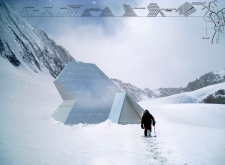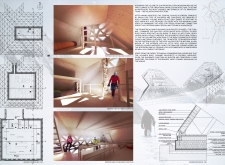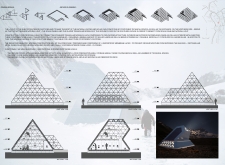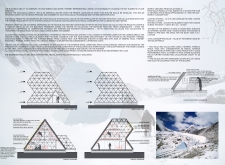5 key facts about this project
### Overview
The mountain shelter is designed for extreme high-altitude environments, particularly in locations such as the Himalayas, where challenging weather conditions demand innovative architectural solutions. The principal objective is to provide a resilient habitat for climbers and explorers, incorporating sustainable practices and renewable energy integration. The design is informed by traditional Nepali architecture, especially the geometries found in religious structures, emphasizing durability and adaptability against harsh elements.
### Spatial Strategy
The shelter is organized into three levels, optimizing functionality within a compact footprint. The ground floor includes communal areas and vital amenities tailored for immediate needs, while the second level serves as sleeping quarters, featuring storage options and panoramic views that enhance the occupants' connection to the surrounding landscape. The interior layout accounts for limited space yet prioritizes comfort and utility. Natural light enters the shelter through strategically placed glazed triangular modules, maximizing solar gain and reducing dependence on artificial lighting, thereby improving the overall spatial experience.
### Materiality and Assembly
The architectural form employs a geometric approach based on pyramidal structures, constructed from modular triangular components. The exterior utilizes galvanized steel sheets for weather resistance, complemented by a wooden frame that adds warmth to the interior. Insulation is provided by mineral wool, while vapor barriers ensure moisture control. The modular design facilitates efficient on-site assembly, enabling transport to remote locations with minimal skilled labor requirements. This method enhances construction efficiency, reducing both time and resource consumption. Additionally, the incorporation of energy-generation systems, such as photovoltaic panels and a water collection system, further emphasizes the shelter's sustainability and self-sufficiency in isolated environments.





















































